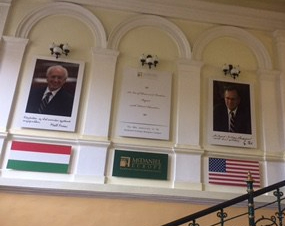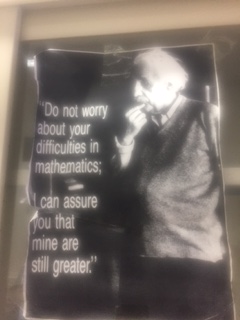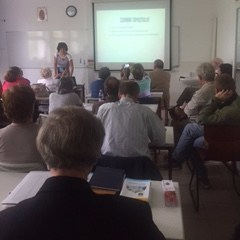September is almost over, and I think I am over the, “I want to go home jitters.” Thank goodness, since I was looking to find a way home for cheap. I listened to a story on the BBC this morning about the Silent Forest. It is a story about the over-harvesting of birds in East Asia. The author gave a dynamic story about the intricacies of the rainforest, the marketers, the poachers, and most importantly the external and internal factors that make it difficult to find a solution to making the forest silent. Of course, my brain is thinking about mathematics for diverse learners. From my perspective, it is about helping teachers and administrators in K-12 settings understands that we are cutting off possible solutions to our world problems by limiting the best and the brightest teaching to only the top 20%. The top 20% will say that they will be held back if they have to wait for the rest of the class. The “average” student will say they will be left back if the special education students are part of a more inclusive classroom. The middle-class student will say that the working class student does not have the vocabulary to keep up with the rigorous nature of mathematics. My kids don’t know how to interact with those children from the other side of the tracks, so we have to spend valuable teaching time helping them understand one another. The college preparatory student will say that they should be able to expand their learning without the vocational student. The teacher will say “how do I teach all the students in the classroom when they are all in a different place on their standardized test scores, or they are all different in their capacity for learning?” These statements and questions are not new in education, or they are not new to teaching mathematics with an inclusive approach.Talk about the problem.
Talk about the problem.
I have been witness to learning about the POSA method. The Hungarian POSA method as described earlier. The inventor has used this problem-solving, constructivist approach with gifted children. The gifted children, mostly boys, are selected by their teachers to attend these weekend camps, where they learn with their peers to engage in mathematics using the approach. This “constructivist teaching” mostly by mathematicians, is an attempt to bring the most gifted into mathematics, for any purpose. The reason for this approach I assume was to make sure that the next generation of math people could be encouraged and POSA was encouraged. But now the mathematics researchers are interested in bringing this “POSA” into general-typical mathematics classrooms. The teachers are taught using the method, at the university as part of their regular professional development, and then the teacher works with her administration to build this in each of their school settings.
I met one such teacher, who is experimenting with the POSA method. In the school at which she teaches, and this is a common practice in Budapest schools, to take a group of students organized from highest to lowest, and place them in two different classes. Typically the students know if they are in the top group or the lower ranked group. There might some self-fulfilling proficiency( about who will succeed) going on here when someone is placed (based on their scores) at the bottom group based on their end of the year examination in primary school. The students assigned to the top or the bottom group based on the high school entrance test taken at the end of the primary level education. (Primary schools are broken down into two four-year sections: 1, 2, 3, 4 and then 5, 6, 7, and 8. Students take an examination around age 14 which will begin the determination of their fate for the rest of their lives. High schools are highly selective, based on the end of the high school level examinations. If students score well enough, then they are supported via scholarship to attend university. If you do not score well enough, then you are allowed to go to University, but at your own expense. This system has many characteristics similar to the United States system in which the author is familiar. This teacher has agreed to take a mixed group of kids, ones from the top of the high school exam ranks and those from the bottom of the secondary school examination group and teach them as a heterogeneous group. Parents and the head teacher of the school granted this seasoned teacher permission to place these students in one class. This heterogeneous grouping is a new thing, and I commend this teacher for undergoing this democratic experiment. These students will be together with the same math teacher for the next four years. The research will help us understand how these methods for teaching mathematics are valuable for all students. The teacher is already amazing, and I believe her expectations for success in this setting will be the marker for the program’s success.
In the United States, and maybe in New York, if you live in a nice neighborhood and you are white, then you have access to the better public schools. If you are poor and of color, then how do you have access to the school in your neighborhood. In New York City the selection of schools appears to be very close to my understanding of the Budapest/Hungarian system. The context of ensuring that children get the most rigorous education around mathematics is a system problem. If one is to engage the system, then each must be willing to act as a part of that system. While there are activism responsibilities, one must fight the problem of ensuring that all students get what they need is an individual responsibility to take it on for the betterment of the system. Maybe this is the democracy talk. Maybe this is where we have to look at ourselves in this democracy and decide what is going to be best for the democracy.
So what about Meritocracy? A meritocracy only exists in a system that is fair. One’s birth position (i.e., first middle or last) or one’s birth station (poor or rich, white or black, smart or smarter, abled or disabled) should not determine one’s station in life. This discussion about mathematics is a discussion about how we want our democracy to survive. Social class, and race, and religion, and ability class should not be the factors which determine the course of our lives. Teachers may play a vital role to play a role in interrupting a system with low expectations for a particular set of students. With how they interact with their students in each class. GESA (generating expectations for student achievement), Grayson____ . GESA is an about how we use our interactions with students to make a difference in their learning. It is about how our expectations make a difference in their education, and how we monitor our expectations to better teach the students in front of us. Our expectations do affect student learning. Expectations are often explicitly spoken, but the unspoken, implicit expectations often have more effect on student learning.
Something else to think about: Check out the App Photomath and let me know what this means in the teaching of high school algebra.








